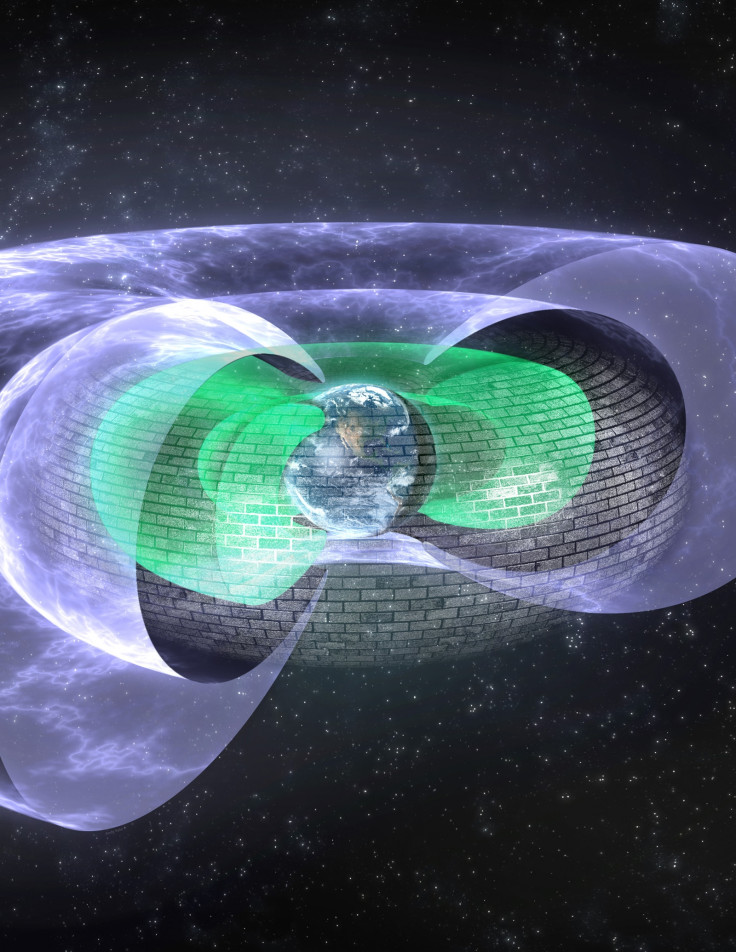Invisible 'Star Trek Force Field' Protects Earth from Killer Electrons

An invisible 'force field' reminisce of Star-Trek's deflector shields has been discovered 7,200 miles above Earth, protecting the planet from "killer electrons".
The so-called force field, discovered by astronomers working at the University of Colorado, is found in the Van Allen radiation belts - two doughnut shaped rings above Earth filled with high-energy electrons and protons.
The Van Allen radiation belts were first discovered in 1958, and found to be comprised of an inner and outer belt reaching up to 25,000 miles above Earth's surface. The belts swell and shrink in response to incoming energy disturbances from the Sun.
In 2012, Daniel Baker, director of CU-Boulder's Laboratory for Atmospheric and Space Physics (LASP), discovered a third belt that acts as a "storage ring" between the inner and outer Van Allen belts. The storage ring is transient, coming and going depending on the space weather.
New 'force field' layer discovered protecting Earth
Published in the journal Nature, researchers have now discovered a new layer located at the inner edge of the outer belt - 7,200 miles from Earth's surface.
This 'force field' layer appears to block ultra-fast "killer" electrons from moving into Earth's Atmosphere. The electrons moving around space have been known to fry satellites, degrade space systems, and pose a threat to astronauts.
Baker said: "It's almost like theses electrons are running into a glass wall in space. Somewhat like the shields created by force fields on Star Trek that were used to repel alien weapons, we are seeing an invisible shield blocking these electrons. It's an extremely puzzling phenomenon."
Previously, scientists thought the killer electrons looping around Earth slowly drifted towards the upper atmosphere before being wiped out when they interact with air. However, the barrier appears to stop them before they can get this far.
Scientists initially thought the force-field was either something to do with Earth's magnetic field or radio signals from human transmitters that scatter the charged electrons, but neither could explain the phenomenon.
"Nature abhors strong gradients and generally finds ways to smooth them out, so we would expect some of the relativistic electrons to move inward and some outward. It's not obvious how the slow, gradual processes that should be involved in motion of these particles can conspire to create such a sharp, persistent boundary at this location in space."
Another theory was that it is a massive cloud of cold, electrically charged gas that stretches thousands of miles above the Earth and scatters electrons with its low frequency electromagnetic waves, but Baker says there must be more to it than this.
"I think the key here is to keep observing the region in exquisite detail, which we can do because of the powerful instruments on the Van Allen probes. If the sun really blasts the Earth's magnetosphere with a coronal mass ejection (CME), I suspect it will breach the shield for a period of time."
© Copyright IBTimes 2025. All rights reserved.






















